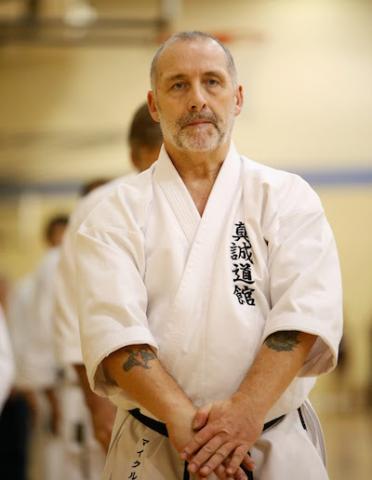Getting hit doesn't hurt (But love sometimes does)—Part 2
July 1, 2016
With an estimated 50 million karateka in the world there are no figures that I am aware of to demonstrate what percentage have been training for more than a few years. Certainly, given the direction of karate's growth over the past fifty-years, it wouldn't be too outrageous to suggest that a greater value has been placed on quantity over quality. So what happened?
Getting hit doesn't hurt (But love sometimes does)
June 15, 2016
Getting hit doesn't hurt...that's not only the name of this article: it's a fact! It was also a discovery I made many years ago when, as a young man caught in a downward spiral of violent behaviour, my life was heading to the bottom faster than a rock in water. Unable to take control of the rage that burst to the surface with increased regularity, my teenage years bore witness to a boy broken by his inability to alter course. Appreciating that it was my fear of being hit, and not the actual pain I might feel when a blow landed, was a massive turning point in my sprint to the bottom. It was a fear that lay at the heart of my hesitation to start a fight; but once that fear was removed, my downward trajectory grew quickly steeper.
Redemption: A Street Fighter's Path to Peace
May 16, 2016
Being born the fifth child into a working-class family of six children guaranteed I had a fight on my hands from the very beginning. That my siblings and I grew to be productive members of society suggests that my childhood, although often chaotic, served me well. Dublin, Ireland, was not the attractive city in 1955 that it is today, so my birth on the fourteenth of May that year, in the upstairs front bedroom at 88 Kylemore Drive, rekindled thoughts in my father's head of returning to England. And in 1958, when I was three years old, the family moved to Manchester in the heart of England's industrial northwest.
The Different Jing and Their Applications
July 6, 2015
Jing can be expressed by the hands, elbows, shoulders, hips, knees, legs, or even the body itself. Taijiquan emphasizes the upper limbs and the body, and uses the legs and feet as secondary weapons.
Training Theories of Southern White Crane Styles
August 13, 2012
Training theories are the root of every style. From understanding these theories, the actions or techniques are derived. If you train contrary to Crane style theories, then the techniques you are performing cannot be considered Crane style.
Key Points of Shaolin White Crane Kung Fu
-
August 6, 2012
The Crane is a weak animal without much strength to use in fighting. However, when necessary, it can defend itself very effectively. A Crane defending itself relies on only three things: the ability to jump, the breaking power of its wings, and the pecking of the beak.
Introduction to Internal and External Jin
-
March 20, 2007
Introduction to Internal and External Jin (martial power)






